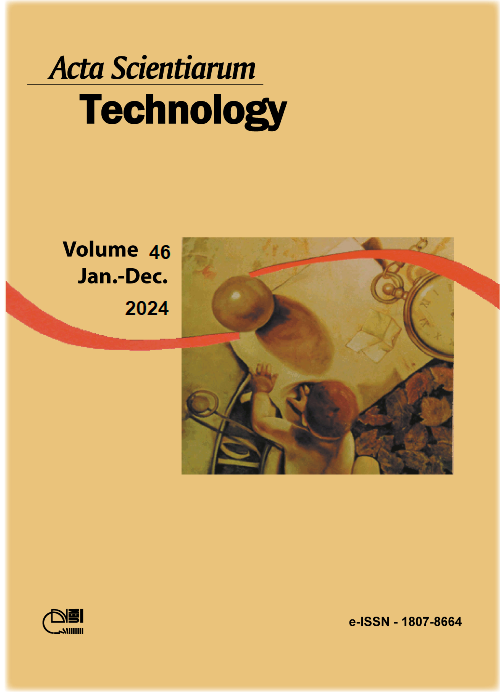Lychee peel extract obtained by ultrasound-assisted extraction: bioactive compounds and functional properties
DOI:
https://doi.org/10.4025/actascitechnol.v46i1.66447Keywords:
Litchi chinensis; phenolic compounds; α-amylase inhibitory activity; α-glucosidase inhibition; angiotensin-converting enzyme.Abstract
The purpose of this study was to evaluate the impact of extracting solvent composition on the concentration of bioactive compounds and functional properties of lychee peel extracts obtained by ultrasound-assisted extraction. Five conditions were evaluated with different solvent proportions: 100% water, 25% ethanol and 75% water, 50% ethanol and 50% water, 75% ethanol and 25% water, and 100% ethanol. The use of an equitable mixture of water and ethanol (50% ethanol and 50% water) resulted in extracts with a higher content of total phenolic compounds (10964.3 mg EAG 100 g-1), antioxidant activity (27.40%), and inhibition of α-glucosidase (94.31%), α-amylase (33.49%) and angiotensin-converting enzyme (ACE, 51.82%). This extract showed a diversity of phenolic compounds (quercetin 3-glucoside, procyanidin A2, B1, and B2, epicatechin, catechin, kaempferol 3-glucoside, trans-resveratrol, myricetin, and gallic acid). Therefore, extracts of lychee peel with potential anti-diabetic and anti-hypertensive activity can be obtained by ultrasound-assisted extraction. 50% water and 50% ethanol may be suggested as the extracting solvent.
Downloads
Downloads
Published
How to Cite
Issue
Section
License
DECLARATION OF ORIGINALITY AND COPYRIGHTS
I Declare that current article is original and has not been submitted for publication, in part or in whole, to any other national or international journal.
The copyrights belong exclusively to the authors. Published content is licensed under Creative Commons Attribution 4.0 (CC BY 4.0) guidelines, which allows sharing (copy and distribution of the material in any medium or format) and adaptation (remix, transform, and build upon the material) for any purpose, even commercially, under the terms of attribution.
Read this link for further information on how to use CC BY 4.0 properly.



















8.png)




